What made you interested in research on radioactivity?
When I was around 12 years old, I learned physics for the first time at school. It was incredibly interesting and like the first love for me. I chose physics as my major at Kyiv State University (current National Taras Shevchenko University of Kyiv) and was going to study theoretical physics especially. However, in April 1986 when I was in military service (that was a duty at that time in Soviet Union), Chernobyl accident occurred. Because many specialists were needed for the investigation, I had to change my major to radiation physics. Chernobyl accident changed my life.
In fact, forest radioecology is just one of my research interests. Actually, I’m also interested in all the researches that my IER colleagues are tackling on. They are radioecology and geoscience in general, and these are the big science that interact and connect with many other science fields.
Radiation is considered as danger. That is true when the doses are high enough, though, radiation can be a tool at the same time for gaining new knowledge about the mechanisms of response/protection of living beings against stress. Additionally, radionuclides can also serve as tracers in the study of biogeochemical cycles in the environment.
What institutes did you belong to and what kind of researches did you conduct before you came to IER?
I joined Ukrainian Institute of Agricultural Radiology (UIAR) in 1989 and worked there until I came to IER. Of course it was just a coincidence, I started my research on the site 3 years after the accident in both Chernobyl and Fukushima (I came Fukushima in 2014). I conducted experimental and modelling studies on the environmental problems related to the Chernobyl accident. The research fields I was involved in include radionuclide dynamics in the terrestrial ecosystems, effects of radiation on plant species, detection and characterization of the Chernobyl fuel particles, their transformations in the environmental conditions, radionuclide atmospheric transport during the wildland fires, soil-to-plant transfer and foliar uptake of radionuclides in the agricultural ecosystems, intake and behavior of radionuclides in agricultural animals, dosimetry of human and biota, and so on.
I enjoyed every research, but the most interesting one for me was radiobiological research on the mechanisms of radiation effects on trees. That connects to my current research.

Standing by one of the very few pine trees that were severely affected but survived the accident.
What brought you to IER?
Just after IER was established in 2013, the IER members visited research institutes in Europe including UIAR to observe the direction of their research and to learn their experiences in Europe. Talking with the Japanese people, I decided to apply for the position at IER.
I wanted to apply my knowledge for Fukushima and I thought I could contribute to Fukushima from my experiences. Also, I considered possibilities to conduct research with modern equipment and facilities. I knew that Japan is such a high-technological country because I had visited Japanese institutes before 2011. And of course, I wanted to try the new job because I thought it was challenging!
However, making the decision to move to Japan was not easy especially for my family and relatives. Some of them told me not to go. So I expected to fulfill the research plan and come back in 2 years. However, I found out later that I was too optimistic. Two years were not enough at all because the research plan significantly expanded to cover new promising study directions.
Why did you decide to focus on forest at IER even though you had very broad experiences at UIAR?
Among the research fields for which IER was recruiting researchers at that time, I thought I could contribute the most in forest research. Also, forest was the last topic which I studied at UIAR.
Could you please tell us about your research at IER? What have you found so far?
Together with the colleagues we created the research network including several experimental sites in the evacuation areas. Because no researchers had studied forest at IER before I came, I had to start it just from scratch. It was exciting! With a huge help from IER’s Japanese staff, I enjoyed the work a lot.
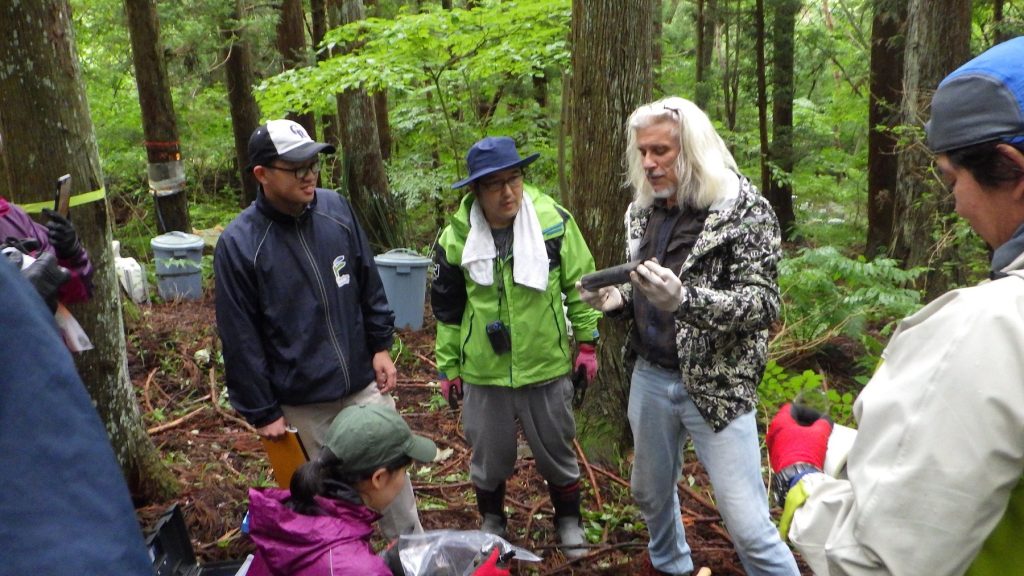
Then we identified the dominant trends of the radiocesium dynamics in the forest biomass of the principal forestry species, such as Sugi, Hinoki and Akamatsu. We were the first research team in Japan who reported the radiation-induced morphological transformations in the forest species (Akamatsu) and formulated the dose-effect dependence.
There are many differences between Chernobyl and Fukushima. For example, while Chernobyl is very flat area, Fukushima is mountainous. Also, the species of trees are different and reactions to radiation differ depending on species. For example, radiocaesium concentration is higher in sapwood than in heartwood – this is what we know from the Chernobyl experience, and this is what was written in all radioecological reviews. However, we found out that is opposite for Sugi in Fukushima. When I reported this at IER’s annual symposium, an European famous specialist could not believe it – but it’s true, and it was reported by other researchers, too.
What kind of research do you want to tackle on in the future? What is your goal?
I want to continue the current researches. We have found some interesting things about the radiocesium translocation in Sugi and Hinoki, and we want to explain its mechanism. Because we obtained a large amount of data on the radiocesium dynamics in forest ecosystem compartments, we are going to continue to monitor the experimental sites, focusing on the mechanisms of long-term dynamics. Also, we will continue the study of mechanisms of abnormal morphological transformations in Akamatsu.
In the broader context, I want to expand our research area in radiobiology. Although it’s time consuming and requires investments in both facilities and person, I think we can have more benefits from the study. It can be a good opportunity for the PhD studies as well.
And of course I want to contribute to the revitalization of forestry in the radioactive contaminated areas in Fukushima. I’ve met with some forest owners and had opportunities to hear their concerns about their forests. The local people tells me a lot and it’s very motivating to talk with them. I wish I could talk with them directly in the same language. I understand that our studies, besides the scientific results, must have the practical output.
What is your impression of Japan or Fukushima?
This is a short question but the answer may be very long! Just in a few words… I’ve been staying in Fukushima for more than 6 years and I really like Japan and Fukushima! I like friendly and polite people around me. I like IER and I’m proud of being a member of the team! I also like beautiful nature and “oishi” food! Just like many European people, my image of Japan before I moved here was “high-tech urban” country. Therefore it was surprising for me to see there are such a beautiful nature in Fukushima. I like Inawashiro Lake and Goshiki-numa and I want to explore more places in Japan!
There are also some things that are usual and natural for Japanese people, like safe and clean streets, well organized traffic, high level of the medical care, attitude to old people. I want to say that these are very important but such high standards have not become a common practice in many other countries!
Well, the problem is that Japanese language is so difficult! I know that I am missing a lot without being able to understand it.
Could you give a message to people who are interested in studying Environmental Radioactivity?
This is a field where the advanced methods and equipment are applied to study the fundamental things about life. This is the fast developing science. The research results have practical value for people in Fukushima.
I think there are several advantages to learn at IER. The first is that we have professors who research various fields such as ocean, animal, river, fish, and so on. Therefore, you can have wide opportunities to cover environmental radioactivity. The second is that we are located pretty close to the experimental sites. The third is that we have well advanced equipment and facilities. Students also can use them for your research. And for the last, especially for Japanese students, it is a good opportunity to learn in English from the international faculty members.
